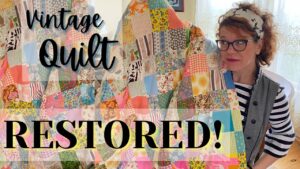Hawaiian quilts are a style of quilting that originated in the Hawaiian Islands and is characterized by its bright, vibrant colors and bold geometric patterns. The designs often feature Hawaiian motifs such as hibiscus flowers, palm trees, and other tropical elements. Hawaiian quilts are usually made from cotton fabric, but may also be made from silk, satin, and even wool. The quilts often feature appliqued and pieced fabrics, as well as intricate hand-quilting, embroidery, and beading. These quilts are a popular way to add a touch of tropical beauty to any home décor.
Hawaiian quilting is a unique style of quilting that originated from the indigenous Hawaiian people. It is believed to have been introduced to Hawaii by missionaries in the early 1800s. Hawaiian quilting is distinguished by its use of bright colors, geometric patterns, and floral motifs. Hawaiian quilts often feature a variety of applique and embroidery techniques and are typically made from fabrics such as cotton, linen, and silk. Hawaiian quilts are often used to commemorate special occasions, such as weddings, births, and graduations. Hawaiian quilting is an important part of Hawaiian culture and is still practiced today by both Hawaiians and those of other cultural backgrounds.
What are Hawaiian Quilts Called? – Learn About Traditional Hawaiian Quilting
Hawaiian quilts are called “kapa”. Kapa is a type of quilting that uses traditional Hawaiian quilting techniques to create intricate patterns and designs. Kapa quilts are typically made using traditional Hawaiian fabric, such as barkcloth and kapa cloth, and feature colorful and unique patterns. The quilts are often made in the traditional Hawaiian style, with decorative edges and intricate patterns.
Kapa quilts can be found in many aspects of Hawaiian culture and are often used as gifts and decorations in the home. Traditionally, the quilts were used to wrap babies and keep them warm, but they can also be used to decorate furniture and hang in the home. Kapa quilts are also popular souvenirs for tourists visiting the Hawaiian Islands.
Kapa quilting is an art form that has been passed down through generations in Hawaii, and today, many kapa quilters still use traditional techniques to create beautiful and unique quilts. The quilts are often created using a variety of materials, including batik and cotton fabric, silk, and other natural fibers. Quilters often incorporate traditional Hawaiian motifs and symbols, such as lauhala leaves, fish, flowers, and other traditional Hawaiian imagery, into their quilts.
Kapa quilting is an art form that continues to be practiced and appreciated in Hawaii and around the world. For those interested in learning more about traditional Hawaiian quilting, there are many resources available, including classes, books, and online tutorials.
Discover the Meaning Behind Hawaiian Quilt Patterns
Hawaiian quilt patterns are a symbol of the islands’ culture and tradition. They are made up of geometric shapes and colorful designs that represent different elements of Hawaiian life. Each pattern has a special meaning that is connected to the Hawaiian culture and history.
Common Hawaiian quilt patterns include motifs such as the pineapple, which is a symbol of hospitality, and the hibiscus, which is a symbol of beauty. Other popular patterns include the lauhala, which represents the weaving of leaves, and the mola, which is a traditional Hawaiian quilting technique.
The meaning behind these patterns is often connected to the Hawaiian culture and the specific family or tradition that created it. For example, some Hawaiian quilt patterns represent the family’s ancestry or the family’s achievements. Others reflect the family’s values and beliefs.
Hawaiian quilts are also often used to tell stories or commemorate important events or people. For example, a quilt might feature the story of a family’s journey to Hawaii or a special event such as a wedding or birthday.
Hawaiian quilts are often given as gifts to mark special occasions and to honor the recipient’s connection to the Hawaiian culture. They are also used to celebrate the beauty of the islands and to honor the Hawaiian spirit and culture.
Uncovering the Meaning Behind Queen Liliuokalani’s Quilt | A Historical Significance
Queen Liliuokalani was the last Hawaiian monarch and the only female ruler in Hawaiian history. In the late 19th century, she was deposed by foreign powers and forced to abdicate her throne. After her abdication, Queen Liliuokalani used quilting as a way to express her grief and speak to her people in a way that transcended language.
The quilt she made was known as the “Queen’s Quilt” and was composed of hundreds of patches of fabric in different hues and patterns. Each patch had a special meaning and was meant to carry a hidden message to the Hawaiian people. In the quilt, she stitched symbols of hope, unity, and perseverance. Some of the symbols used included the Hawaiian flag, the Hawaiian coat of arms, a royal crest, and a cross.
The quilt was a symbol of her enduring spirit and a reminder of what it meant to be Hawaiian. It was a message of strength and resilience during a time of great struggle and political upheaval.
Today, the Queen’s Quilt is held in the Bishop Museum in Honolulu, Hawaii and is a symbol of Hawaiian culture and identity. It serves as a reminder of the power of art to communicate even when words cannot.
Hawaiian quilts have a rich and vibrant history, and are among the most beautiful and intricate quilts in the world. These quilts are a testament to the skill and artistry of Hawaiian quilters, and continue to be a source of inspiration for quilters around the world.
Hawaiian quilts are a unique form of quilting that originated in the Hawaiian Islands. These quilts are made with bright, vibrant colors and are often filled with intricate designs and patterns. They are often made with traditional Hawaiian symbols and motifs, such as flowers, fish, and birds. Hawaiian quilts are often used to celebrate special occasions or to commemorate a special event in one’s life. These quilts are also a great way to add a decorative touch to any room and can make a one-of-a-kind gift.




